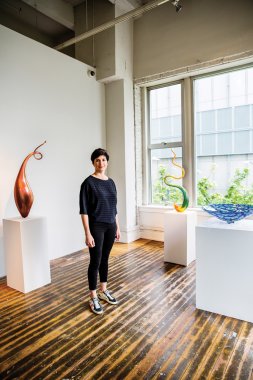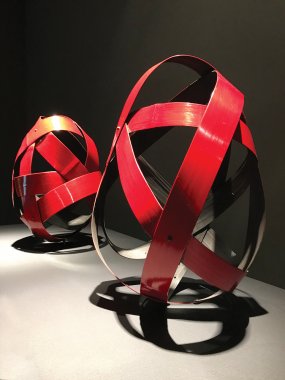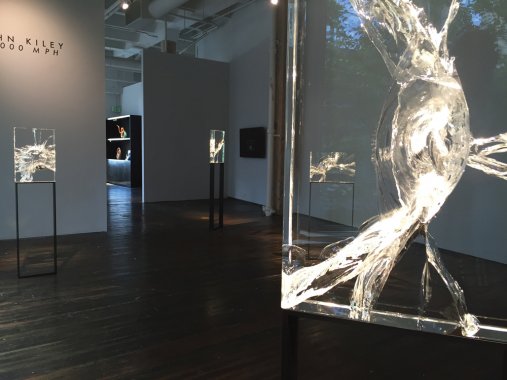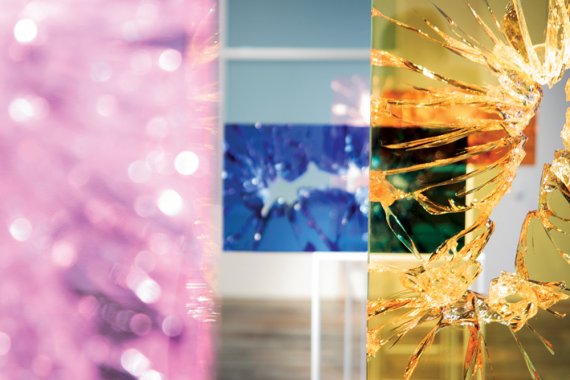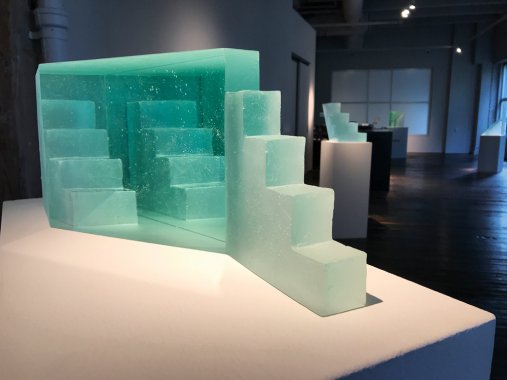Traver Gallery
Traver Gallery
Traver Gallery, a Seattle arts institution admired by glass collectors nationwide, heeds its past while moving into the future.
Started by William Traver in 1977, the gallery made its name in glass. It hosted the first Pilchuck Glass School show and introduced Americans to Italian master Lino Tagliapietra, whose work has a permanent space in the gallery. It represents contemporary innovators such as Dante Marioni and has mounted several exhibitions with glass guru Dale Chihuly.
Traver, 76, still plays an active role in the business but has passed leadership to his daughter Sarah, 38. By the time she’d graduated from high school, she had already held many jobs there and at Vetri, the craft boutique the family also owns.
“At the time, I was not inclined to be part of the family business,” Sarah Traver says. “I wanted to separate myself from the name and be autonomous.” After earning an MFA in fine art, photography, and art history from the University of Washington in 2002, she spent two years teaching elementary school in New York City through Teach for America.
She says she moved back to Seattle in 2004 “to think about my next step” soon after her father opened a second gallery in Tacoma. (It closed in 2012, a victim of the recession.) As an associate there, she learned a systematic business approach from then-director Greg Robinson, which she says complements the more intuitive leadership style she picked up from her father. When Robinson left in 2004, she took over, finding new fulfillment in a director’s role.
“It all kind of worked out naturally,” says Traver, who still values input from her father, whom she calls “Bill” at work and “Pops” at home; “he comes into the gallery every day for at least a few hours.” (Her mother, Anne Traver, worked as a graphic designer for many years; she is now a ceramist.)
The 4,000-square-foot gallery near the Seattle Art Museum is open and airy, with many objects displayed on pedestals. In the center, visible from the entrance, is a large enclosed space sometimes used for experimental displays and installations. Traver speaks enthusiastically about the space, a deliberate part of the new design when the gallery moved from the Belltown neighborhood to its current downtown location in 1992. “It’s like a little black box. We think of it as a theater for artists,” she says.
It’s a clear example of the gallery’s commitment to promoting, rather than just selling, art. “We want people to see us as a space where you can find not only beautiful objects to buy, but also newly compelling works that are visually challenging and that spark conversation,” she says. “We also want to nurture that in our artists.”
The endeavor can come with some risks. John Kiley, whose show runs August 1 to September 1, has been experimenting with shattering glass in dramatic ways and filming the results. “He’s working on a huge project in a glass factory in Arkansas that’s about to be demolished. I don’t know exactly what he’s doing,” Traver says.
But the gallery doesn’t fear the unknown; instead, it embraces the possibilities. Says Traver: “We try to go where the artists take us.”

